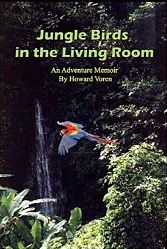Blue Front Plumage Color Differences
© Howard Voren. Click here to use this content.Q: I have two blue-fronted Amazons. I have a male that is the Chaco type. He has extensive yellow on his head and at the bend of the wing. The other is a female that fits the description of the nominate race, A. aestiva. She does differ from the description in that she has a bit of yellow intermixed with the red at the bend of the wing. The two birds are markedly different in appearance. I have had no luck finding like-colored mates for either of them. Is it wrong to breed them together? Would doing so be considered hybridizing?
A: First, let’s discuss a few definitions: A species is a population that under natural circumstances will only interbreed with members of the same population and, therefore, have genetically isolated themselves from other similar groups. Subspecies are color or size variations that occur in separate populations of the same species. In order to be classified as subspecies of one another, these subspecific populations must be willing to interbreed where, or if, their ranges meet. Notice that the accepted scientific definition states “interbreed,” not “hybridize.”
If a subspecific population evolves to the point that it is no longer recognized by other subspecific populations, and due to this lack of recognition, the birds of that population are no longer willing, under natural circumstances, to interbreed, that subspecific population is then considered a separate species.
For example, look at the yellow-lored and white-fronted Amazons (A. xantholora and A. albifrons). These are two birds that are assumed by most to have evolved from a common ancestor. Although their close relationship is obvious by their appearance and unique size, they are classified as separate species.
The reason they are not considered subspecies of one another is because where their ranges meet in southern Mexico, they will not interbreed. The unnatural pairing of these two birds for breeding purposes would be hybridizing, not interbreeding.
In the case of the blue-fronted Amazon, the story is quite different. The ranges of the two described subspecies does meet. Over a very large range, which includes most of Paraguay, all the birds are intermediate to the two groups. By definition as subspecies they should and do interbreed where their ranges meet. In fact, the female that you described is an intermediate. In order to be “pure” aestiva, the red at the bend of the wing should not be intermixed with yellow. Of course, I would always suggest that blue fronts be paired with mates of similar color. This Amazon’s drastic color variation throughout its range is something that is worth preserving. I would not, however, feel guilty about pairing different-colored variations together; it’s something that also takes place in their natural habitat. This is highly preferable to allowing the birds to sit idle.


